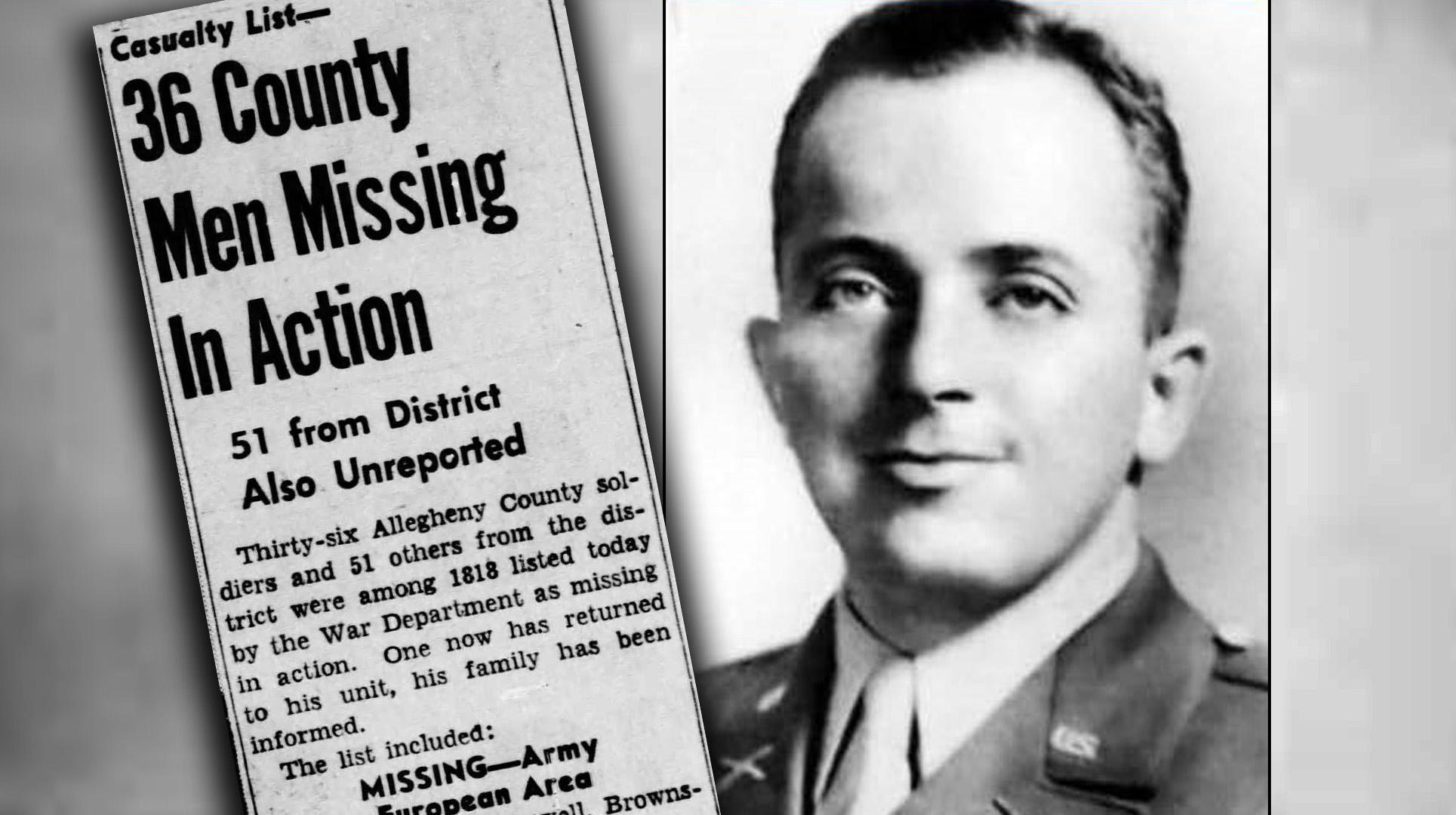

1st Lt. Nathan B. Baskind was 28 when he was killed in June 1944.
A platoon commander of four M-10 tank destroyers in Company C, 899th Tank Destroyer Battalion, Baskind and another soldier from his company were scouting ahead of their company when they were ambushed. Baskind’s fellow soldier was heavily wounded but escaped the firefight, making his way back to the unit. He believed Baskind was dead and attempts to find the officer’s body came up empty.
In fact, Baskind was captured and died at a German hospital for air force personnel near Cherbourg, France on June 23, 1944, according to records. He was buried in a military cemetery in Cherbourg, his body intered in an unmarked grave with other troops, leaving their remains “commingled,” according to Defense Department officials.
But on May 8, the Defense POW/MIA Accounting Agency said Baskind’s remains had been found and accounted for, according to a release by the agency.
Baskind was one of thousands of unidentified American troops from WWII that the Pentagon is still working to account for. Like Baskind, many American service members were buried in unmarked or comingled graves, but advances in technology now allow the POW/MIA agency to account for their bodies more than half a century later. The Pentagon estimates that there are nearly 72,000 American troops from WWII still missing with about 1,600 recently accounted for.
The search for Baskind was — like many of the still-unaccounted for troops of the era — as much a paperwork mystery as missing remains. When the war ended, the American Graves Registration Command was tasked with recovering missing American personnel in Europe like Baskind. The program operated between 1945 to 1951, employed 13,000 personnel, and cost $163.8 million in wartime dollars.
Subscribe to Task & Purpose today. Get the latest military news and culture in your inbox daily.
Baskind’s death and burial report were discovered in records recovered from the Germans. His information had been filed after the war on May 29, 1945, in Meiningen, Germany. In early 1948, the International Committee of the Red Cross sent the Army one of Baskind’s identification tags. The German War Grave Commission, called “the Volksbund,” contacted the U.S. Army regarding 1st Lt. Baskind in November 1957.
Baskind’s ID tags and “remnants of an American-type shirt” with a first lieutenant rank and tank destroyer insignia was discovered in a commingled grave in the Cherbourg cemetery where 24 Germans were believed to be buried. German officials were unable to separate the remains into individual sets so they put them in seven burial pouches and re-interred them 40 miles south of Cherbourg in the Marigny German War Cemetery.
In 2023, the Volksbund and other private research organizations exhumed the commingled remains for analysis. By February 2024, researchers contacted the DPAA with news that Baskind’s remains had been analyzed by a private U.S. laboratory. To verify the lab’s findings, the U.S. military medical examiner scientists reviewed previous analysis of Baskind’s mitochondrial DNA, Y chromosome DNA, and autosomal DNA.
Baskind’s legacy is remembered on “Walls of the Missing” at Normandy American Cemetery, a remembrance site for American battles and fallen service members in Colleville-sur-Mer, France. His name joins other missing Americans who went missing during WWII but a rosette will be placed next to his name to show his body has been accounted for.
The latest on Task & Purpose
- Marines will land on Normandy beaches to commemorate D-Day’s 80th anniversary
- Air Force raises maximum amount for retention bonuses to $180,000
- Former Admiral’s $500,000 retirement job was a bribe, prosecutors say
- Army special operations officer under investigation after shooting
- Meet the soldier who is taking the Army combatives scene by storm